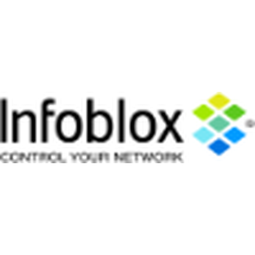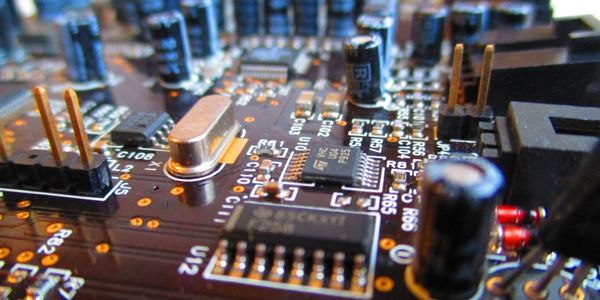Technology Category
- Analytics & Modeling - Predictive Analytics
- Infrastructure as a Service (IaaS) - Hybrid Cloud
Applicable Industries
- Electronics
- Semiconductors
Applicable Functions
- Logistics & Transportation
- Product Research & Development
Use Cases
- Inventory Management
- Supply Chain Visibility
Services
- Cloud Planning, Design & Implementation Services
- System Integration
The Customer
Global Semiconductor Company
About The Customer
The customer is a U.S. manufacturer of engineered materials, optoelectronic components, and semiconductors. Founded in the early 1970s, the company has a 50-year record of innovation in researching and producing application-specific materials, integrated components, and advanced software for aerospace, defense, automotive, communication, consumer electronics, industrial, life sciences, and semiconductor markets. The company employs over 24,000 workers in 18 countries and 73 global locations, including manufacturing, research and development, sales, service, and distribution facilities in the United States and worldwide. The company is focused on growth through mergers and acquisitions (M&As), and in 2019–2020, it acquired a global electronics firm.
The Challenge
The U.S. manufacturer of engineered materials, optoelectronic components, and semiconductors was focused on growth through mergers and acquisitions (M&As). In 2019–2020, it acquired a global electronics firm and needed immediate connectivity and visibility into the acquired firm’s geo-distributed operations. The company had a highly compressed timeline, with only days to integrate the firm’s DDI operations, while deferring a full network migration to a future date. The company was actively engaged in acquiring and merging strategically aligned companies as a key global growth strategy. The company needed to rapidly integrate its new operations, which included significant remote locations in Asia. The company turned to Infoblox to quickly design a highly secure, available, and reliable solution that could deliver full visibility into new sites. It needed dynamic scalability to accommodate its growing operations and the ability to unify a disparate, geo-diverse infrastructure.
The Solution
The company worked with Infoblox to design a cloud-managed BloxOne DDI solution that allows immediate spin-up of virtual machines from the Infoblox CSP. The process is fast and efficient—access the CSP, download the VM, provision the on-premises host and it’s operational. The BloxOne DDI solution saves money, offers instant visibility and avoids the time and expense of sending engineers to deploy solutions at newly acquired sites. The new architecture includes two mini-hub sites in Europe, two in APAC, two in China and four in the United States to provide high-performing, local access DDI for distributed locations. Once the BloxOne DDI solution was delivered, and network merger and transition plans were defined, the company upgraded its NIOS DDI on-premises infrastructure for existing locations using a hybrid, four-tier design to expand visibility, scalability, and performance.
Operational Impact
Quantitative Benefit

Case Study missing?
Start adding your own!
Register with your work email and create a new case study profile for your business.
Related Case Studies.

Case Study
Remote Temperature Monitoring of Perishable Goods Saves Money
RMONI was facing temperature monitoring challenges in a cold chain business. A cold chain must be established and maintained to ensure goods have been properly refrigerated during every step of the process, making temperature monitoring a critical business function. Manual registration practice can be very costly, labor intensive and prone to mistakes.
Case Study
KINESYS Semiconductor Factory Automation Software
KINESYS Software provides both Integrated Device Manufacturer (IDM) and Original Equipment Manufacturer (OEM) customers world-class software products and solutions for advanced wafer and device traceability and process management. KINESYS offers state of the art database technology with a core focus on SEMI standards. KINESYS’ challenge was to make back-end processing failure-free and easy to use for clients while supporting licensing models more adaptable to changing industry needs.

Case Study
Cloud Solution for Energy Management Platform-Schneider Electric
Schneider Electric required a cloud solution for its energy management platform to manage high computational operations, which were essential for catering to client requirements. As the business involves storage and analysis of huge amounts of data, the company also needed a convenient and scalable storage solution to facilitate operations efficiently.

Case Study
Leveraging the IoT to Gain a Competitive Edge in International Competition
Many large manufacturers in and outside Japan are competing for larger market share in the same space, expecting a growing demand for projectors in the areas of entertainment, which requires glamor and strong visual performance as well as digital signage that can attract people’s attention. “It is becoming more and more difficult to differentiate ourselves with stand-alone hardware products,” says Kazuyuki Kitagawa, Director of Service & Support at Panasonic AVC Networks. “In order for Panasonic to grow market share and overall business, it is essential for us to develop solutions that deliver significant added value.” Panasonic believes projection failure and quality deterioration should never happen. This is what and has driven them to make their projectors IoT-enabled. More specifically, Panasonic has developed a system that collects data from projectors, visualizes detailed operational statuses, and predicts issues and address them before failure occurs. Their projectors are embedded with a variety of sensors that measure power supply, voltage, video input/ output signals, intake/exhaust air temperatures, cooling fan operations, and light bulb operating time. These sensors have been used to make the projector more intelligent, automatically suspending operation when the temperature rises excessively, and automatically switching light bulbs. Although this was a great first step, Panasonic projectors were still not equipped with any capability to send the data over a network.





